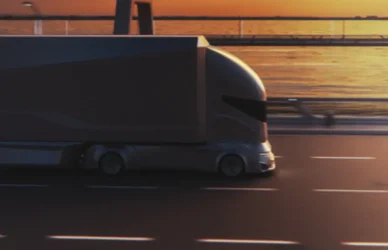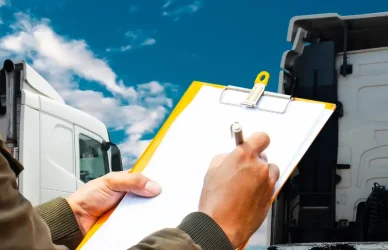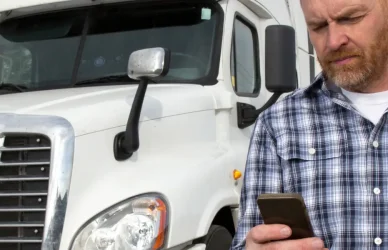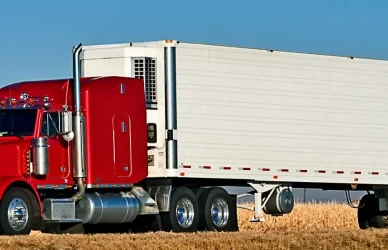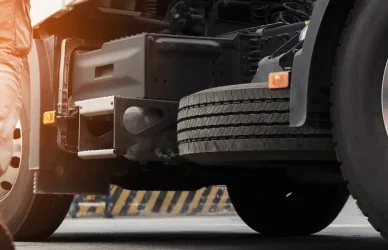Finding the right approach to combating climate change can be challenging. With numerous solutions available, the North American Council for Freight Efficiency has coined the term “Messy Middle” to describe this environment of diverse options.
Jeff Seger, a member of NACFE and owner of InProTech Solutions, brings his industry expertise to help businesses transition to clean energy and ensure profitable operations. According to Seger, the Messy Middle is a phase that encompasses the range of decarbonization and other solutions, spanning from A to Z.
“A refers to alternate fuels like natural gas, propane and even hydrogen used to power a modified internal combustion engine, and Z refers to zero-emission vehicles like battery-electric and hydrogen fuel cell electric equipment,” he said. “D [diesel] sits closer to the present, where a fleet takes a more traditional approach making the best of what’s already available and optimizing it, plus adopting the upcoming 2027 equipment.”
Achieving progress in sustainability begins with simple steps such as improving aerodynamics, standardizing electronic parameters, and promoting fuel-efficient driving habits. Renewable fuels also offer potential solutions.
To meet the regulations of Advanced Clean Fleets and sustainability targets, it is crucial for businesses to embrace a greener future. To select the best powertrain for your operations, consider the duty cycle and availability of infrastructure for alternative fuels.
When considering zero-emission vehicles, you must also assess the charging infrastructure and technician training required. Additionally, implementing small changes to improve fuel economy can benefit fleets of any size.
The future of green trucking is likely to involve a combination of battery-electric vehicles and fuel cell electric vehicles, powered by renewable sources such as wind, solar, and nuclear energy. However, in the meantime, it is important to explore familiar solutions and carefully evaluate the risks and benefits of new technologies.
Acquiring 2027 diesel vehicles will require more complexity to meet environmental standards. Improvements include selective catalytic reduction enhancements, dual dosing of diesel exhaust fluid, and cylinder deactivation for increased efficiency. Hybrid features may also be added for carbon dioxide reduction.
Interim solutions include using biodiesel blends, propane conversions for medium trucks, and natural gas for Class 8 vehicles. Cummins will introduce a game-changing natural gas engine in 2024, offering both driver satisfaction and fuel savings. Volvo is also conducting on-road testing for natural gas conversions.
All natural gas engines have the potential to use renewable natural gas, which has a positive impact on the climate due to its lower greenhouse gas emissions compared to methane.
Hyliion offers a hybrid powertrain that combines a natural gas engine with electric axles and a battery pack. It can drive 75 miles on one charge and uses the engine to provide power when needed, while the electric axles enhance performance and recover energy. This system qualifies as a near-zero-emission vehicle.
There are potential challenges in the supply chain for battery-electric vehicles (BEVs). While demand may be high, there could be a shortage of precious metals required for production. However, there is optimism about battery performance and the development of solid-state batteries and magnet-free electric motors.
Fleets considering BEVs will need to assess the integration of advanced designs from companies like Tesla and Nikola into their maintenance systems. They may also consider traditional electric powertrains from established truck manufacturers.
For Class 8 trucks, hydrogen fuel cell electric trucks are seen as the solution, with hydrogen-powered internal combustion engines as an interim option. However, battery-electric systems are more efficient than hydrogen systems, and there are concerns about the power grid’s ability to support green energy distribution.
Cooling systems in BEVs and hydrogen fuel cell electric vehicles (FCEVs) pose challenges and technological risks for developers and maintenance departments.
Industry companies are collaborating to address these challenges. Joint ventures like Cellcentric GMBH, formed by Daimler and Volvo, and partnerships between Paccar and Toyota, Cummins Accelera, Daimler Trucks, and Paccar, aim to accelerate the development and localization of battery production and supply chain.
While a green future is on the horizon, there are still technological risks and choices to navigate.
Source: Transport Topics




